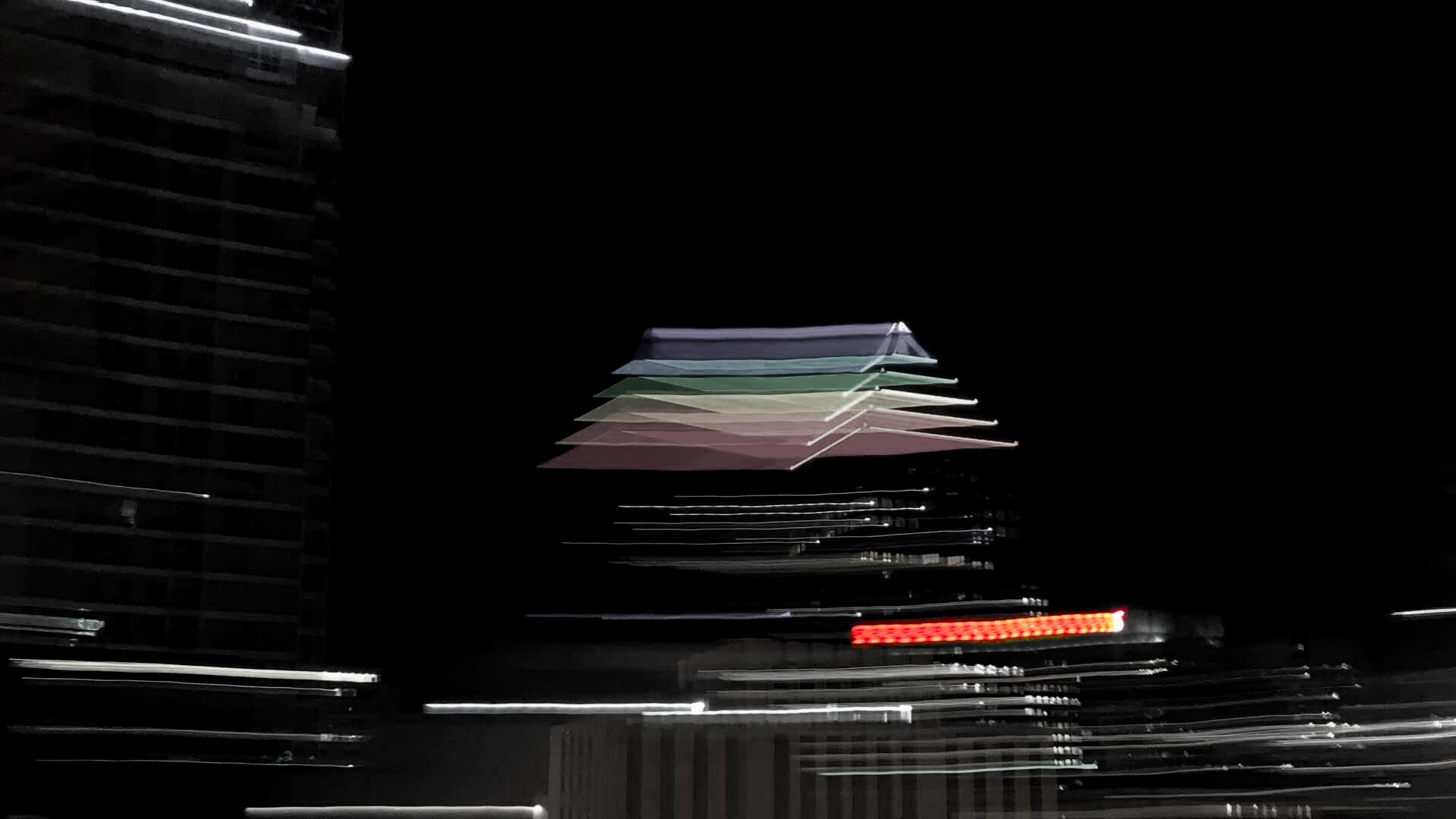In a country where Opera was invented, it is no wonder that love songs seem to be omnipresent and over-represented. On the flipside, amorous passions lead to political ones. The bulk of these protest songs about rebellion do indeed date from the period after Unification and prior to Fascism, and that inheritance is especially thanks to Anarchist anthems.
The postwar period, in contrast, consisted of more love songs until the Cantacronache collective in the late 1950s questioned such canzonette as those heralded by the San Remo Song Festival. Mainstream pop singers came up with protest lite songs in the 1960s because it was easier to denounce US for the far away Vietnam War than denounce NATO occupying and militarizing parts of Italy. Il ragazzo di Via Gluck (1966) by Adriano Celentano is about concrete jungles covering up green spaces of Milan and his mono-accord Il Mondo M7 (1966) is an anti-militarism tune indicting no one. Former teen heart throb, the eternal ragazzo Gianni Morandi sang about Vietnam in C’era un ragazzo che amava I Beatles e I Rolling Stones (1966), (“There was a boy who loved the Beatles and the Rolling Stones”). The song caused a diplomatic incident and was covered by Joan Baez, including the echomimetic machine gun, Tatatata. The first Italian anti-war song of the modern period was Gorizia, tu sei maledetta (“Gorizia, you are cursed”) about a 1916 battle where 100,000 soldiers died and the song was written by a soldier in the trenches.
Canzoni di denuncia or musica impegnata terminology came into parlance in the 1960s although such songs existed before. The folk re-emergence in Italy modelled songs and musical movements from Europe (not American Folk), but also those folk traditions internal to Italy, including material coming from the turn of the century when most Anarchist songs took the melodies of other songs. The original protest songs come from the popular tradition where authorship remained anonymous.
State-owned RAI Radio and TV station censored programs for minor transgressions, upsetting the prudish sensibilities of the Christian Democrat-appointed censorship commission which butted heads with artists. Any reference to nudity or God was censored such as Lucio Dalla’s autobiographical 4/3/1943 (1971) where the bastard son from a wartime relation gets referred to by the townspeople as Gesubambino (Baby Jesus). The censorship was uneven; Fabrizio De André’s songs which mentioned God, were banned on the RAI while they weren’t on Vatican Radio. Protest songs finally found a home when private radios opened up the airwaves in the 1970s.
No Rebel Songs from il Risorgimento (Unification)
The first historical Italian divide between North and South should have produced music during the battle for Unification. While the Irish had rebel songs against their occupiers such as Come out, Ye Black and Tans, the defeated South never penned Risorgimento songs. The Unification was a civil war of sorts. The remnants of the defeated side, Bourbon soldiers from the Southern Kingdom of Naples, became ragtag brigands in their uniforms, and never passed down chants of rebellion, despite the rich musical history of Naples (17th century Neapolitan song about nativity became Italianized as Italy’s official Christmas song). A song about brigands was penned anonymously and a century later by Eugenio Bennato in 1979 by Musicanova, Brigante Se More (You die Brigand), which the public mistook as a traditional song. He also wrote other songs about brigands: Ninco Nanco, Vulesse addeventare nu brigante. Il Sorriso di Michela (Michela’s Smile) about a famous female brigantessa, Michelina Di Cesare, whose photo of her executed naked body with its smiling face was used politically to quell Southern resistance towards Unity forces.
Stormy Six, a prog rock group, revisited the Unification of Italy in their concept album L’Unita (1972) with the song Pontelandolfo, dedicated to the 1861 massacre in that town during which the Piemontese soldiers committed war crimes. To cite the major ones: they chained townspeople before their execution, raped women and torched the entire town. Tre Fratelli contadini di Venosa is a song about three peasant brothers’ bodies that also shared the same fate as the corpse of Michelina. Sciopero! Strage di Portici (Strike! Massacre of Portici) describes Italy’s first train wagon factory near Naples ( the Kingdom of Naples had railway before the North) where Piemontese soldiers beat and killed seven strikers because they had a four-hour strike protesting 10-hour work days after the Piedmont government nationalized the factory, re-organizing the transfer of the factory to the North.
In Guardia giù dalla pianura (1973), Stormy Six reinterprets international protest songs.
The majority of songs at the turn of the 20th century, however, came from the industrial North’s political circles; for example, a song about a worker losing his job because he went on strike in Cara Moglie (Dear Wife).
At the same time, and connected to the poverty and social malaise, emigration songs emerged in the Northern regions, an emigration which predated Unification and outnumbered emigration from the South in that period. In Cara moglie di nuovo tiscrivo, a Northern immigrant miner in France writes to his wife about his hardships. Ship sinking was a theme in other emigration songs like Il Naufragio di Sirio about emigrants’ ill-fated journey from Genoa in 1906 as well as Mamma mia dammi centolire, probably the most evocative immigration song from the period where many Northerners moved to South America; about a son asking his mother to give him money to emigrate, only to die on a sinking ship. Andiamo in Transilvania tells about the people of Trieste immigrating to Romania during Unification “to push a wheelbarrow because poor Italy can’t pay,” highlighting the little known fact that Northerners immigrated to Eastern Europe. The other stanzas of that song mention America and Australia: “we will embark for Australia, we will have a house in six months like we never had in Trieste” and the song ends with the mordant comment, “Triestino, make your bundle, the dinghy is already leaving, there will be no Triestino left in Trieste.”
The Tuscan Italia Bella Mostrati Gentile song is about leaving for Brazil’s coffee plantations: “beautiful Italy show yourself to be kind and don’t abandon your children, if not, they’ll end up all in Brazil to be reminded to never come back, that the only ones left are priests, monks and the businessmen desperate with taxes to no end, and rats, they too might leave to pick coffee, the worker doesn’t work, hunger devours him, the peasant knows how to make do. Let’s hope the 20th century will end this torment but we all know that the disaster always touches the worker.”
Il Crac della Banca (1896) written by Anarcho-Socialist playwright Ulisse Barbieri and published in a political magazine called L’Asino (Donkey), and later recorded by Cantacronache, is about the first bank scandal involving the Banca di Roma in 1893. The irreverent, inspired lyrics could find resonance today: “our governatori are all malfattori, they rob everything from us in order to tutor us. They rob everything to become senators” or “they make them cousins to the King.” “If you steal a loaf, they put you in jail but if you steal millions, they appoint you Commendatore.”
Ulisse Barbieri’s Inno Abissino, (set to Inno Garibaldi), was a brazen anti-imperialist song since Ethiopia was colonized by Italian state before Fascism and its own Abyssinia anthem.
In the name of the law we contend, that every law of her patria be defended, they call our martyrs spies, with forts and cannonballs they want to us tamed…Get out of Africa, We aren’t raiders, Get out of Africa, Get out foreigner…Around beheaded heads they dance, with fire body members they burn, truncated by ironclad extreme gasps, again we will scream, ‘Get out foreigner!’
Anarchy
Prolific Pietro Gori wrote lyrics to many songs, some associated with Anarchism in spite of his Socialist background. All of his compositions were based on Tuscan popular songs such as Inno della canaglia /Marcia di ribelli (1891). His best known song is Storelli dell’esilio (1898) sometimes known by its alternate title Profughi D’Italia (Songs from Exile/ Refugees from Italy) with its chorus: “our patria is the entire world, our law is liberty.” That line came from Rossini’s opera, Un Turco in Italia, but its melody is based on a Tuscan country song, Figlia Campagnola. Storelli dell’esilio became the Internationalist Hymn for Socialist Libertarianism, a by-product of Anarchism. Ballata di Sante Caserio (1900) is about the Milanese Anarchist Sante Caserio who assassinated the French President in retaliation for not pardoning a French Anarchist. Gori was Caserio’s defense lawyer and was accused of inspiring the assassination; he was exiled in Switzerland and jailed, where he wrote Addio a Lugano (1896). Il feroce monarchico Bava (1898) is about a massacre in Milan, after cannonballs were shot into a crowd demanding low bread prices. It was instigated by General Bava Becchis who was decorated by King Umberto I. The king in turn was assassinated for the military decoration by the Anarchist Gaetano Bresci who came all the way from Paterson, New Jersey. Inno individualista (1901) was written anonymously also mentions Bresci. Inno degli Affamati, Hymn of the Starving, was found in an 1898 booklet assembled by the Paterson immigrants.
Many anti-monarchy songs would be sung in the 1940s by Anarchist Partisans such as A Morte la Casa Savoia, (Death to the Savoia Dynasty, bathed in waves of blood) and Salò Fascists’ Vogliamo scolpire una Lapida.
During the Second World War, the formidable Tuscan Anarchist group of partisans, Battiglion Lucetti, named after an anarchist who threw a bomb toward Mussolini, sang Dai Monti di Sarzana ( “From the mountains of Sarzana” ) referring to the Black Brigades enemy, as well as fellow Tuscan and Anarchist Gori. The area of Carrara was where many Fascist squadrons were formed by the industrialists who owned the marble quarries, but the Lucetti Battalion couldn’t even be dismantled by the Nazis, who tried to disarm them, and they got re-armed even after the attempt to extinguish them.
Modern Anarchist songs also ‘borrowed’ from past melodies such as Ballata di Pinelli, (1969), an ode to Giuseppe Pinelli, written by his anarchist friends, and set to that anti-monarchical song, Il Feroce monarchico Bava. Pinelli was arrested and interrogated for the Piazza Fontana bombing, whose neo-fascists perpetrators remain to this day unpunished. He supposedly fell out from the fourth floor window of the police station’s interrogation room. According to the police, his suspect death stemmed from a fainting spell.
Fascism
The first protest song during Fascism was an Anarchist song about the 1924 political assassination of Socialist Party leader Giacomo Matteotti. Canta di Matteotti (song composed in 1926 from a Tuscan melody) was one of many songs dedicated to the leader such as Povero Matteotti (based on the melody of World War I’s La Leggenda del Piave). All Socialist, Anarchist songs and foreign national anthems were banned by the regime in 1929.
The Fascist period gave rise to jingoistic tunes about colonialism and patriotic crap such as Faccetta Nera Abyssinia (Black Face, Abyssinia, 1935). Ironically, it was initially censored and the song was even denounced for supposedly encouraging miscegenation, highlighting a bella Abyssinia, mentioning the Italian defeat in the battle of Adua in 1896, and equating fallen Italian soldiers with Africans. The original was very Fascist anyway, glorifying black shirts, yet, modifications had to be done. A song created as a reaction to it, Faccetta Bianca, never took off. Finally, the popularity of Faccetta Nera made it into the Fascist songbook (one you could hear played by Montreal’s Banda Gentile at every Italian neighbourhood religious feast).
Some claim that le Mondine, the impromptu choirs of female rice weeders in marshes who weren’t allowed to speak (as seen in the Bitter Rice film from 1949), created the melodies of both Fascist Giovinezza as well as the Resistance anthem Bella Ciao. Actually, the official song of the Fascist Party in 1922, Giovinezza, was originally written in 1909 and re-written as an anti-Fascist song in 1921 as Giovinezza (Arditi del popolo) and published in Venice by a pro-Soviet publication since Arditi del popolo, the people’s brave army, was the first anti-Fascist mobilization in the 1920s. Furthermore, there were three Fascist versions (one for female Fascist troupes) versus two Marxist versions, while the 1909 version is apolitical, probably based on the one le mondine created in the 1800s.
Censorship in music started in 1928 with the banning of American music. All foreign words had to be translated and Italianized, including names of foreign singers in the Italianization period in 1936. The regime created new Italian words to fight foreign words (like changing chauffeur to autista) and banned all regional linguistic minority languages, such as French, Slovenian, German, Albanian, Serbian-Croatian and Griko. Swing and jazz from America was looked down upon by the regime since it was “black music.”
Subversion in the music of the day
Maramao perché sei morto? (1939), a childish foxtrot song about a cat who ran away from his home comforts and died, was sung by Trio Lescano (Dutch-Hungarian Jewish sisters who were exceptionally given Italian citizenship by Mussolini; they later feigned their arrest to not appear as regime collaborators). The singers and the song were accused of mocking Fascism by alluding to the recent death of Fascist leader, Costanzo Ciano (the father of Mussolini’s son-in-law). Its composer, Mario Panzeri had other songs banned; for an allusion to a Fascist leader and sports icon, Pippo non si sa (1939) and Il Tamburo della banda d’Affori (1943) suffered the same fate because he makes a veiled allusion to the 550 chamber of fascists as 550 pifferi / tooters. There was Gorni Kramer’s Crapa Pelada (1937) song about a certain bald head. These songs were deemed Canzone della fronde, subversive and eliciting anti-Fascist sentiments, such as a seemingly innocuous love song, Un’ora ti vorrei: “I’d like to have one hour, to tell you all the things you don’t know; I, who cannot forget, what you are mean to me.”
Resistance songs
Once in a while melody marries protest songs because, let’s face it, very few protest songs are catchy and they must be in their nature to be popularly embraced. Woody Guthrie knew how to make catchy tunes. In the same way Quilapayún’s famous Chilean anthem, El pueblo unido jamàs serà vencido, has captured popular audiences throughout the world.
Bella Ciao, probably the best known Italian political song outside Italy, espouses the romantic ideal of a partisan who wakes up one morning, leaving his sweetheart, fighting for liberty, and if he will die, he shall die with a rose in his mouth. Some claim that the Bella Ciao melody comes from le mondine, Alla mattina appena alzata (1906) from the rice paddies of Vercelli, Piedmont, while others claim the mondine took it back in the postwar period. Apparently this partisan song par excellence was never sung by partisans; hence, it was another anachronistic song. Partisans probably did sing Bandiera Rossa or Avanti Popolo, (Red Flag / Forward, People) written in 1908 by Carlo Tuzzi, in turn based on Lombard Republican songs from the 19th Century, with last lines changed by Communists during Fascism. The song was even parodied by Zucchero changing the red flag to a red moped in “O Avanti popolo, la Lambretta rossa” in Per Colpa di Chi (1995). Cosa rimiri mio bel partigiano used to be Cosa rimiri mio bel Alpino sung by peasants in the Parma and Piacenza areas. And that too, was changed from the original Cosa rimiri mio bel marinaro because the landlocked region didn’t have sailors. Il bersagliere ha cento penne was an old Alpine song used by non-Communist Catholic partisans. Fischia il vento composed by Felice Cascione in 1943 was adapted from the melody of the 1938 Soviet Katyusha. The origins of La Brigata Garibaldi, too, was either refashioned from a Fascist march, which in turn was used during Spanish Civil War by Italian pro-Republican volunteers, or was actually a bonafide Garibaldi song from the 19th century. It was composed in 1944 by the Brigata Garibaldi Partisan sector of Reggio Emilia and became its rallying song. Siami ribelli della montagna (1944) was written by Casalini and Rossi for Ligurian partisans. The irreverent La Badoglieide (1944) skewers Pietro Badoglio after the opportunistic power transfer, was written by Nuto Revelli, for the Piemontese Partisan group, Brigate Giustizia e Libertà, based on E non vedi che sono Toscano, while the chorus is sung in Piemontese.
Do you remember when you were a Fascist and did the Roman salute? Remember the expedition to Ethiopia … Remember the war in Greece where you sent soldiers to their slaughter, but you wanted to appear più bello, you gave your resignation. You were playing bocce while alpinisti were starving to death in Russia. But what did you care? Money and the good occasion awaited. At the end of July, the occasion arrived, you started to act like dictator. You called in the Fascist squads, you jailed anti-Fascists. The shirt was no longer black but Fascism remained boss. While the bombs dropped onto Italy, (King) Vittorio started dropping his pants. Do you remember your inglorious escape with the King to safe lands? You both are dirty figures and deserve to be shot by a firing squad. We are croaking on mountains while you are tranquil but do not regard us as imbeciles as so far as to be fooled once again… Benito broke our pockets while you, Badoglio, broke our coglioni, for coglioni and old charlatans, Italy has no place for.
The unrepentant Fascists from their Repubblica di Salò enclave even adapted this partisan song because they viewed Badoglio as a traitor.











